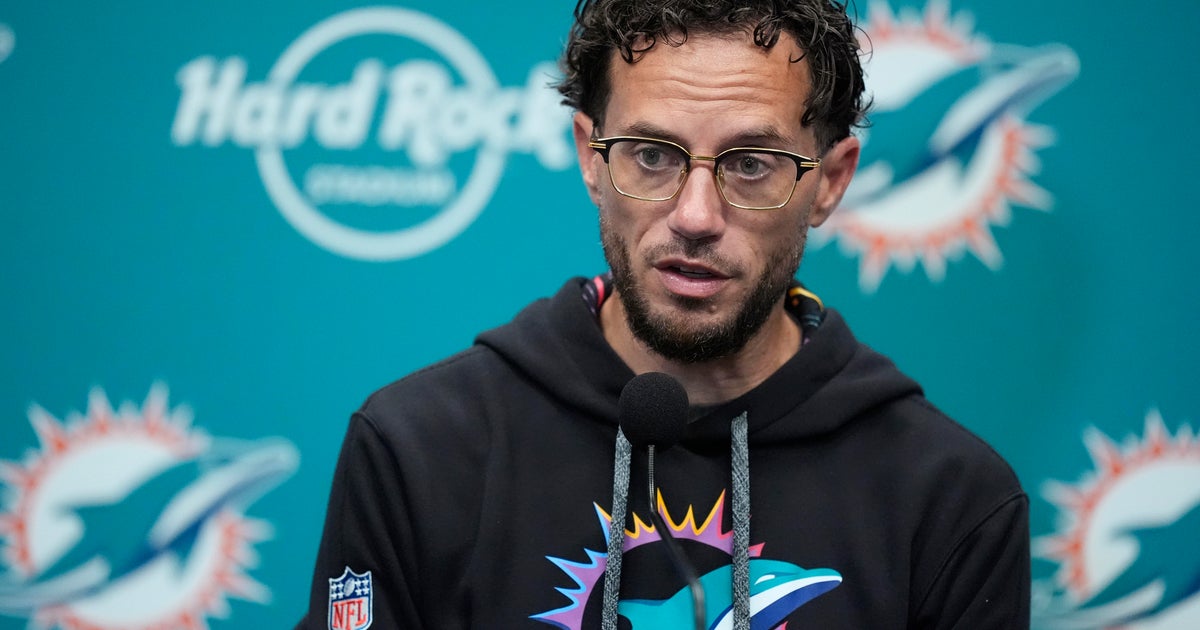Marlins Are Confident Stanton Has Made Full Recovery
Follow CBSMIAMI.COM: Facebook | Twitter
JUPITER (CBSMiami/AP) — When Miami Marlins slugger Giancarlo Stanton was hit in the face by a pitch last season, it was a tough thing for most people to see.
When someone recently raised the topic of Stanton's beaning, Billy Conigliaro said he had never seen it, so he went to his computer and found a video replay.
His reaction?
"Oh my God, that's terrible," Conigliaro said.
He spoke with an unfortunate frame of reference. Conigliaro happened to be a spectator in the stands when his older brother Tony took a fastball in the left eye in 1967 — one of the most notorious beanings in baseball history.
Stanton was back in the lineup this month at the start of spring training. The Marlins are so optimistic he'll make a complete comeback, they gave him a record $325 million, 13-year contract in the offseason.
But beanings have curtailed careers over the years.
"Fear is the big thing if you get hit like that," Billy Conigliaro said. "And I don't know what kind of character this Stanton guy is."
The 6-foot-6, 240-pound Stanton played football in high school, and he's no shrinking violet. In the months since a fastball to the face from the Brewers' Mike Fiers ended Stanton's 2014 season, he and Marlins officials have repeatedly dismissed the possibility of any carryover effect.
"There are no reservations from anyone in our camp," president of baseball operations Michael Hill said.
Stanton led the major leagues in RBIs when sidelined Sept. 11, and despite missing the final 17 games, he won the NL home run title with 37 and led the league in slugging. He has 154 home runs at age 25 despite playing in spacious Marlins Park.
For fans of a certain age, his beaning brought to mind another precocious slugger. Tony Conigliaro was 22 and already had 104 career home runs when he was beaned. He made an improbable comeback but hit only six homers after age 25, his eyesight permanently damaged. He died in 1990.
Astros shortstop Dickie Thon was never the same after a 1984 beaning left him with vision problems. Stanton was fortunate that while the ball broke his orbital bone and damaged five teeth, he says his vision has been unaffected.
Even without permanent injury, however, a beaning can change the course of a career, as former Brooklyn Dodgers pitcher Ralph Branca will attest.
Branca, now 89, was there when a fastball felled Pete Reiser in one of the majors' worst beanings in 1947. Branca also was friends with Don Zimmer, who lay unconscious for nearly two weeks after been beaned in the minors in 1953, and was beaned in the majors three years later.
"People often wonder how a guy is going to react to it, and how he'll hang in there," Branca said.
Some are unfazed and don't begin to flinch at fastballs. Jason Heyward was beaned in 2013 but returned for the Braves' postseason that year, and last year he batted .271, above his career average.
Heyward, now with the Cardinals, said returning for the playoffs made it easier for him to put any fear of the ball out of his mind.
"I had a chance to play playoff baseball," he said. "That's what I thought about. I didn't think about anything else."
Like Heyward, Stanton is wearing a specially designed helmet for additional protection. Heyward said he doesn't know if Stanton will make a full comeback.
"Everybody's different," Heyward said. "I know what I hope for. I hope he does awesome and continues to be the player he is, because he does a lot of exciting things. He's a young guy like me, and I would miss it if he were to change. I hope the best for him."
Stanton has already come back from one beaning. Two years ago he was hit in the back of the helmet during a spring training practice game by a fastball that got away from Jose Fernandez, then team's top pitching prospect.
Stanton said the beaning briefly made his vision fuzzy, but he missed no playing time and has hit 61 homers in the two seasons since.
"We've been down this road before, and obviously it didn't affect him then," Marlins general manager Dan Jennings said. "With all the impact tests and concussion tests and all those things we've done, we feel very confident that going forward he'll be extremely healthy and ready to produce."
There are plenty of precedents for full comebacks. Jim Ray Hart was beaned twice as a rookie in 1963 and went on to a 12-year career. A pitch broke Ron Santo's cheek in 1966, which led to the introduction of the helmet ear flap, and he played another eight seasons.
Reiser was knocked unconscious when beaned in 1947, one of 11 times he was carried off the field on a stretcher. He was back in the lineup nine days later, and the outfielder's injury-plagued career continued until 1952.
"He didn't shy away," teammate Branca said. "He was a competitor. I don't think he let the beaning bother him.
"But he ran into the outfield wall too many times."
(TM and © Copyright 2015 CBS Radio Inc. and its relevant subsidiaries. CBS RADIO and EYE Logo TM and Copyright 2015 CBS Broadcasting Inc. Used under license. All Rights Reserved. This material may not be published, broadcast, rewritten, or redistributed. The Associated Press contributed to this report.)



